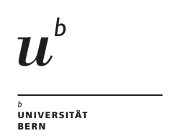“When hearing hoof beats from behind, expect horses, not zebras” – What flexibility research should adopt from scientific philosophy. A critical perspective on available evidence
DOI:
https://doi.org/10.36950/2024.4ciss061Keywords:
stretching, foam rolling, range of motion, underlying mechanismsAbstract
The American College of Sports Medicine classifies flexibility as one out of 5 important health-related parameters that should be addressed in preventive and therapeutic training programs (Garber et al., 2011). Due to its importance in health and athletic performance development, there is an increasing number of studies to figure out flexibility training interventions as well as underlying mechanisms. While several exercise modalities are available, stretching and foam rolling (FR) are the most common training routines to improve range of motion (ROM). Interestingly, acute and chronic effects are mainly attributed to very similar mechanisms, more specifically, improved stretch tolerance and/or structural adaptations such as stiffness reductions in the muscle, the tendon, or the muscle-tendon complex (Takeuchi et al., 2023). Since stretching and FR seem to induce similar effect sizes in acute flexibility, authors suggested the replacement of static stretching to FR in movement preparation routines to avoid the stretch-induced force deficit, thus, impairments of subsequent strength related performance. Similarly, when discussing chronic flexibility routine effects, literature suggests task specificity. Therefore, increased ROM was attributed to specific stretch/foam rolling induced stiffness and passive peak torque changes. Unfortunately, statements developed from used research designs are incomprehensive. When referring to acute stretching of foam rolling effects that can be extracted from numerous systematic reviews, conclusions were drawn from comparisons to passive controls. This, however, does exclusively allow statements that stretching/FR was effective compared to doing nothing, however, does not exclude general warm-up effects, induced by muscle activity. Referring to William of Ockham (1287 – 1347), one popular philosopher from the United Kingdom, the most obvious explanatory approach would be the most likely one. In medicine diagnostics, this statement is metaphorically described as “when hearing hoof beats from behind, expect horses, not zebras”. Therefore, since both routines enhance temperature, the most likely explanation suggest acute ROM increases could rely on general warm-up effects instead of task-specific adaptations. Similarly, for chronic effects, literature suggests that ROM can be increased by several alternative interventions, e.g. full ROM resistance training, indicating shared mechanisms. Both interventions share underlying physiological mechanisms, such as inducing mechanical tension in high muscle lengths.
Consequently, we extensively discussed available evidence in our published research. Key findings will be presented to challenge current paradigms (Warneke et al., 2024).
References
Garber, C. E., Blissmer, B., Deschenes, M. R., Franklin, B. A., Lamonte, M. J., Lee, I.-M., Nieman, D. C., & Swain, D. P. (2011). Quantity and quality of exercise for developing and maintaining cardiorespiratory, musculoskeletal, and neuromotor fitness in apparently healthy adults. Medicine & Science in Sports & Exercise, 43(7), 1334–1359. https://doi.org/10.1249/MSS.0b013e318213fefb
Takeuchi, K., Nakamura, M., Fukaya, T., Konrad, A., & Mizuno, T. (2023). Acute and long-term effects of static stretching on muscle-tendon unit stiffness: A systematic review and meta-analysis. Journal of Sports Science and Medicine, 22, 465–475. https://doi.org/10.52082/jssm.2023.465
Warneke, K., Behm, D. G., Alizadeh, S., Hillebrecht, M., Konrad, A., & Wirth, K. (2024). Discussing conflicting explanatory approaches in flexibility training under consideration of physiology - A narrative review. Sports Medicine, 54, 1785-1799. https://doi.org/10.1007/s40279-024-02043-y
Published
Issue
Section
License
Copyright (c) 2024 Konstantin Warneke, Gerit Plöschberger, Andreas Konrad

This work is licensed under a Creative Commons Attribution 4.0 International License.


